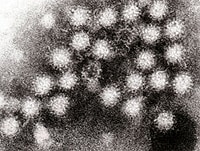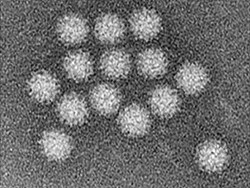ASCO GI: Phase III Bevacizumab Results of the AVEX and TRIBE Trials
Plus: Avastin gets new indication from FDA for second-line treatment
By Anna Azvolinsky, PhD1 |
January 28, 2013
1Freelance Science Writer and Cancer Network Contributor. Follow Her on Twitter 

The same week that bevacizumab (Avastin) received a new indication
for the treatment of metastatic colorectal cancer, results from two
phase III trials involving the drug were presented at the American
Society of Clinical Oncology 2013 Gastrointestinal Cancers Symposium
(ASCO GI) held January 24–26 in San Francisco.
 Among 35 Italian centers, 508 patients
were randomized one to one to either arm, which both included up to 12
cycles of 5 mg/kg bevacizumab followed by bevacizumab plus fluorouracil
as a maintenance therapy.
Among 35 Italian centers, 508 patients
were randomized one to one to either arm, which both included up to 12
cycles of 5 mg/kg bevacizumab followed by bevacizumab plus fluorouracil
as a maintenance therapy.
The study met its primary endpoint—a median progression-free survival of 11.9 months was seen in the FOLFOXIRI arm compared with 9.5 months in the FOLFIRI arm (hazard ratio [HR] = 0.72; P = .001). Response rates were also higher for the FOLFOXIRI combination—64% compared with 53% in the FOLFIRI group (P = .015). Toxicities were as expected and comparable in the two groups.
According to the study researchers, this is the first randomized, prospective trial that has analyzed the benefit of bevacizumab specifically in elderly patients. The results show the combination may be a better treatment that improves elderly patient outcomes. The results validate the use of bevacizumab with capecitabine, a fluoropyrimidine, in elderly patients.
“[These results] confirm a benefit with increased response and tumor control,” said David Cunningham, MD, head of the gastrointestinal unit at the Royal Marsden Hospital in the United Kingdom, and the presenter of the study.
The open-label trial administered bevacizumab to one half of the patients at a 7.5 mg/kg dose every 3 weeks. A total of 280 patients (median age of 76) in 10 countries were part of the trial, which showed the combination prolonged progression-free survival compared with chemotherapy alone. Progression-free survival was 9.1 months for patients taking the combination compared with 5.1 months in the chemotherapy alone arm (HR = 0.53; P < .001).
Overall survival was also improved, but the difference between the two arms was not statistically significant—median overall survival was 20.7 months in the combination arm compared with 16.8 months for the capecitabine arm (HR = 0.79; P = .182). Grade 3 and higher adverse events were more frequent in the combination arm, but researchers said the regimen was generally well tolerated. Grade 3 or higher toxicities were seen in 59% of patients taking bevacizumab plus capecitabine compared with 44.1% of patients taking capecitabine alone.
“This trial result emphasizes that with appropriate selection, patients with advanced colorectal cancer, regardless of age, may benefit from chemotherapy and that the combination of capecitabine and bevacizumab represents a good option that has a favorable balance between efficacy against side effects,” said Cunningham.
Patients receiving the combination lived longer compared with those who switched to chemotherapy alone as a second-line treatment. Results showed a 19% risk of death reduction for patients on the combination therapy compared with standard chemotherapy alone (HR = 0.81; P = .0057) in the phase III ML18147 trial. The median overall survival was 11.2 months compared with 9.8 months. The results are published in the Lancet Oncology.
Bevacizumab is already approved in combination with chemotherapy as a first-line therapy for metastatic colorectal cancer patients and also as a second-line treatment in combination with FOLFOX4 (5-fluorouracil, leucovorin, and oxaliplatin).
TRIBE Trial Results at ASCO GI 2013
Results of the phase III TRIBE trial—comparing bevacizumab plus FOLFOXIRI with bevacizumab plus FOLFIRI—for metastatic colorectal cancer patients who have not been previously treated with chemotherapy were presented at ASCO GI (abstract #336). First-line FOLFOXIRI combined with bevacizumab showed better efficacy compared with the combination with FOLFIRI. A phase II trial had initially showed promise of this combination.
The study met its primary endpoint—a median progression-free survival of 11.9 months was seen in the FOLFOXIRI arm compared with 9.5 months in the FOLFIRI arm (hazard ratio [HR] = 0.72; P = .001). Response rates were also higher for the FOLFOXIRI combination—64% compared with 53% in the FOLFIRI group (P = .015). Toxicities were as expected and comparable in the two groups.
AVEX Trial Results at ASCO GI 2013
Another bevacizumab phase III trial reported at the meeting was the AVEX trial of elderly metastatic colorectal cancer patients. The AVEX trial compared bevacizumab in combination with capecitabine or capecitabine alone in previously untreated patients 70 years or older (abstract #337).According to the study researchers, this is the first randomized, prospective trial that has analyzed the benefit of bevacizumab specifically in elderly patients. The results show the combination may be a better treatment that improves elderly patient outcomes. The results validate the use of bevacizumab with capecitabine, a fluoropyrimidine, in elderly patients.
“[These results] confirm a benefit with increased response and tumor control,” said David Cunningham, MD, head of the gastrointestinal unit at the Royal Marsden Hospital in the United Kingdom, and the presenter of the study.
The open-label trial administered bevacizumab to one half of the patients at a 7.5 mg/kg dose every 3 weeks. A total of 280 patients (median age of 76) in 10 countries were part of the trial, which showed the combination prolonged progression-free survival compared with chemotherapy alone. Progression-free survival was 9.1 months for patients taking the combination compared with 5.1 months in the chemotherapy alone arm (HR = 0.53; P < .001).
Overall survival was also improved, but the difference between the two arms was not statistically significant—median overall survival was 20.7 months in the combination arm compared with 16.8 months for the capecitabine arm (HR = 0.79; P = .182). Grade 3 and higher adverse events were more frequent in the combination arm, but researchers said the regimen was generally well tolerated. Grade 3 or higher toxicities were seen in 59% of patients taking bevacizumab plus capecitabine compared with 44.1% of patients taking capecitabine alone.
“This trial result emphasizes that with appropriate selection, patients with advanced colorectal cancer, regardless of age, may benefit from chemotherapy and that the combination of capecitabine and bevacizumab represents a good option that has a favorable balance between efficacy against side effects,” said Cunningham.
Avastin Gets New FDA Indication for Second-Line Treatment
The US Food and Drug Administration (FDA) approved the use of bevacizumab (Avastin) as part of a new combination treatment for the second-line treatment of metastatic colorectal cancer. The drug is now approved in combination with a fluoropyrimidine-based irinotecan or oxaliplatin chemotherapy for metastatic colorectal cancer patients whose cancer has progressed after first-line treatment with a regimen that contains bevacizumab (ie, second-line treatment of bevacizumab/oxaliplatin for patients who received prior therapy of bevacizumab/irinotecan and vice versa).Patients receiving the combination lived longer compared with those who switched to chemotherapy alone as a second-line treatment. Results showed a 19% risk of death reduction for patients on the combination therapy compared with standard chemotherapy alone (HR = 0.81; P = .0057) in the phase III ML18147 trial. The median overall survival was 11.2 months compared with 9.8 months. The results are published in the Lancet Oncology.
Bevacizumab is already approved in combination with chemotherapy as a first-line therapy for metastatic colorectal cancer patients and also as a second-line treatment in combination with FOLFOX4 (5-fluorouracil, leucovorin, and oxaliplatin).







